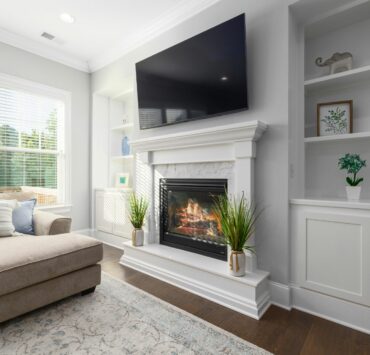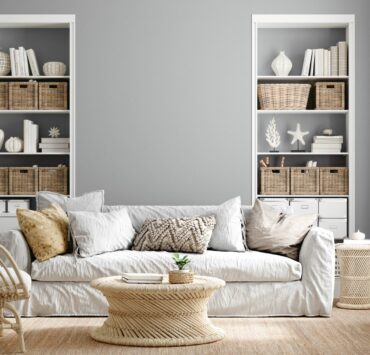In our fast-paced and cluttered modern world, the desire for tranquillity and simplicity has led many homeowners to embrace the minimalist aesthetic. A minimalist living room can serve as a peaceful retreat from outside chaos, allowing you to enjoy an atmosphere of clarity and calm. Join us as we journey through the tenets of minimalism, and learn how to bring its serenity into your living room.
Minimalist Living Room: The Epicenter of Serenity
At the heart of the minimalist design philosophy is the maxim “less is more”. A minimalist living room represents this ethos fully, focusing on simplicity, functionality, and the beauty of empty space.
Understanding the Spirit of Minimalism
Minimalism emerged in the late 20th century as an antidote to consumerism and the cluttered lifestyles it fostered. This design style values the idea of living with less, prizing clarity, and functionality above excess and ornamentation. A minimalist living room is an embodiment of this, displaying only what is necessary and removing the rest to create a calming, clutter-free environment.
The Minimalist Living Room Color Scheme
In a minimalist living room, the color palette is typically neutral, allowing the room’s lines, shapes, and textures to take center stage. Shades of white, gray, and beige reign supreme, often punctuated with black or deep brown accents for contrast. This muted color scheme adds to the tranquillity and cleanliness of the room, further enhancing the minimalist aesthetic.
Furniture Selection for a Minimalist Living Room
Choosing furniture for a minimalist living room requires careful thought and consideration. Every piece must serve a purpose and add value to the space. Streamlined shapes, clean lines, and high-quality materials are trademarks of minimalist furniture. Clutter is a minimalist’s enemy, so opt for pieces that offer storage solutions to keep the room neat and organized.
Creating a Minimalist Living Room: A Step-by-Step Guide
The journey to a minimalist living room doesn’t have to be overwhelming. Follow this step-by-step guide to design a minimalist space that echoes your lifestyle and preferences.
Begin with a Clean Slate
Start by decluttering your current space. Remove any unnecessary items and keep only what you love and need. Remember, in a minimalist living room, each item should add value to the room and your life.
Choose a Neutral Base
Opt for neutral colors for your walls, floors, and large furniture pieces. Whites, beiges, and grays are excellent choices. They make the room feel larger, brighter, and more peaceful.
Invest in Quality Furniture
Minimalist design prioritizes quality over quantity. Choose furniture pieces that are well-made, durable, and functional. Opt for clean lines and streamlined shapes to keep the space feeling open and uncluttered.
Add Texture and Warmth
While a minimalist living room might seem cold or sterile, the addition of texture and warmth through textiles and natural materials can counteract this. A plush rug, a soft throw, or a few linen cushions can add cozy, inviting elements to the room.
Frequently Asked Questions
What Colors are Typically Used in a Minimalist Living Room?
Neutral colors are the cornerstone of a minimalist living room. Shades of white, gray, and beige are commonly used, often complemented with black or deep brown accents for contrast.
What Kind of Furniture Should I Use in a Living Room?
When selecting furniture for a minimalist living room, think functionality and simplicity. Opt for pieces with clean lines and streamlined shapes. Quality is crucial in minimalism, so invest in well-made furniture that can stand the test of time.
How Can I Make My Living Room Feel Cozy?
While minimalist living rooms can sometimes feel cold or sterile, adding warmth and texture through textiles and natural materials can make them feel more inviting. Consider adding a plush rug, a cozy throw, or some linen cushions to bring a sense of coziness to the space.
Can I Incorporate Colors in a Minimalist Living Room?
While neutral tones dominate minimalist living rooms, you can certainly add color. However, it’s best to do so sparingly to maintain the room’s serene, clutter-free aesthetic. A single, vibrant artwork or a couple of colorful cushions can add just enough color without overpowering the minimalist design.
Conclusion
A minimalist living room serves as a peaceful sanctuary that welcomes you with its serene, clutter-free aesthetic. By incorporating minimalist principles into your living space, you can create an environment that not only looks clean and calm but also promotes a lifestyle of simplicity and mindfulness.







